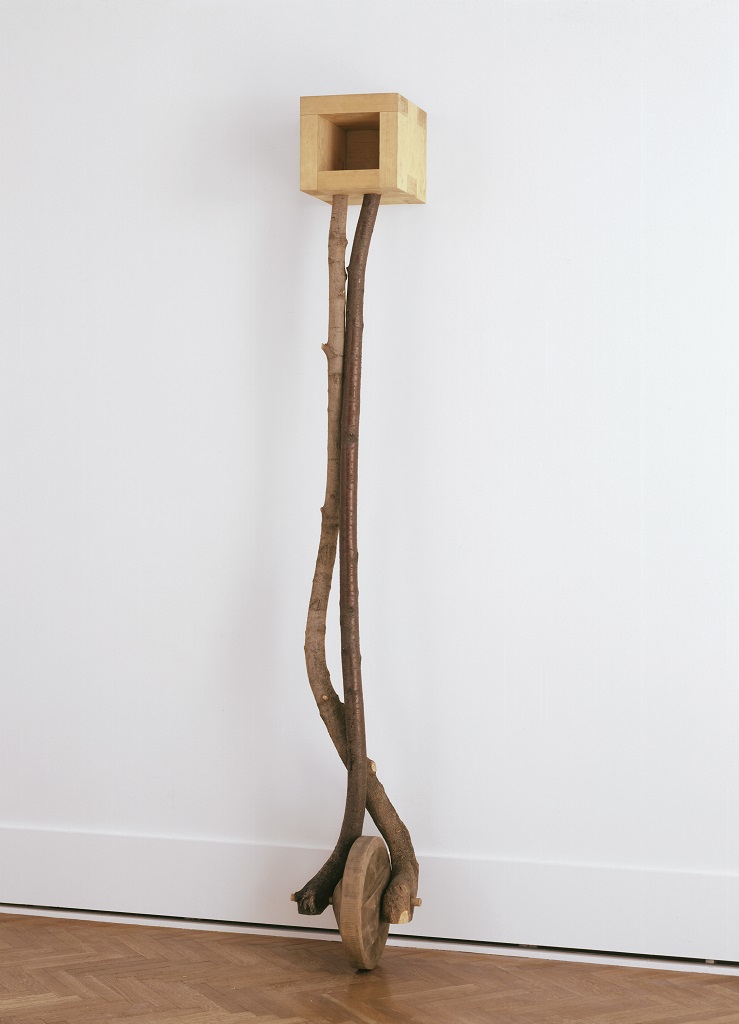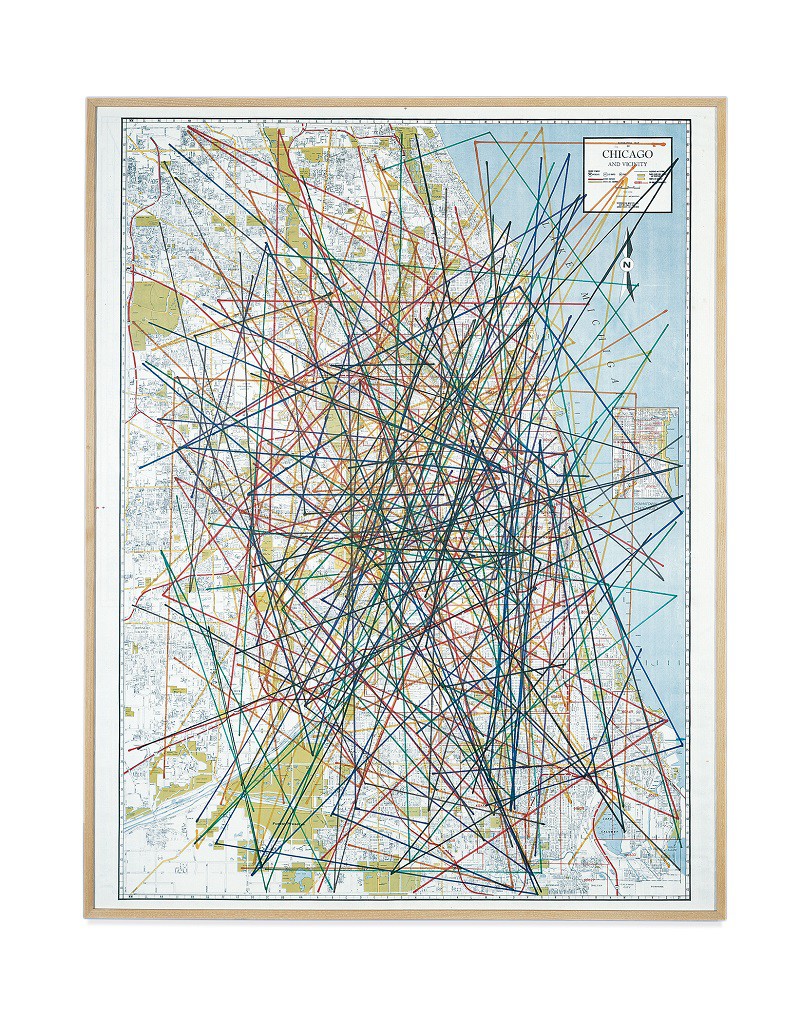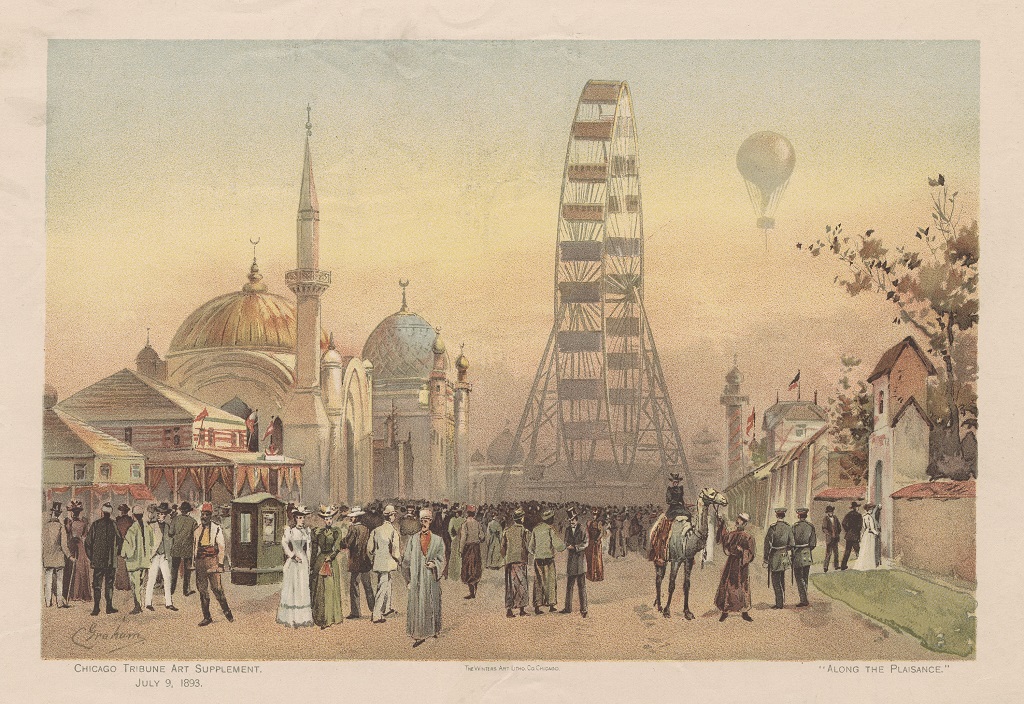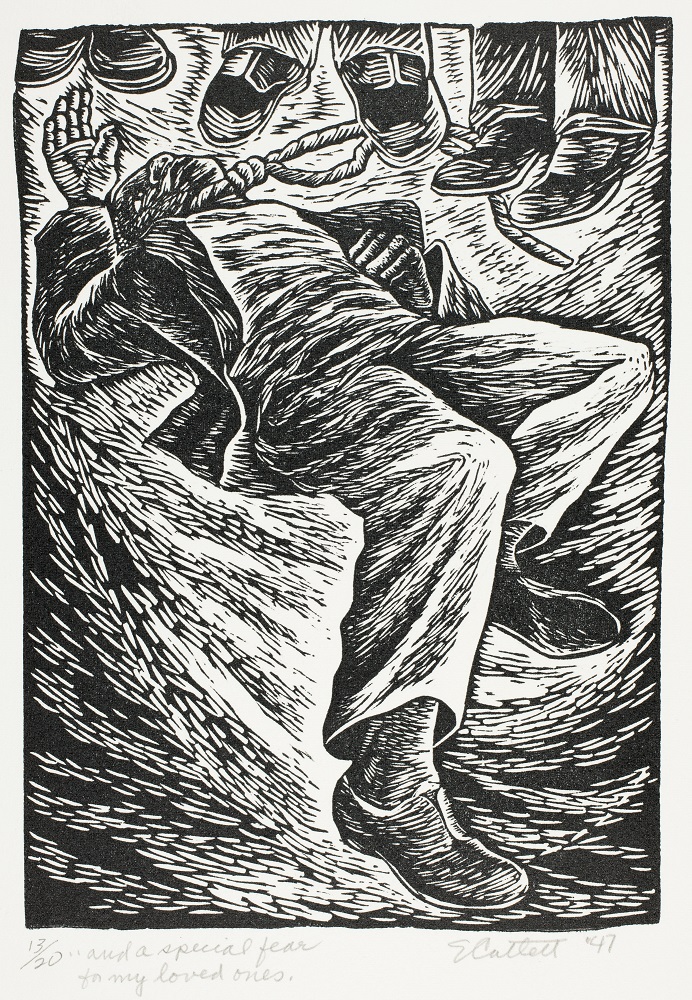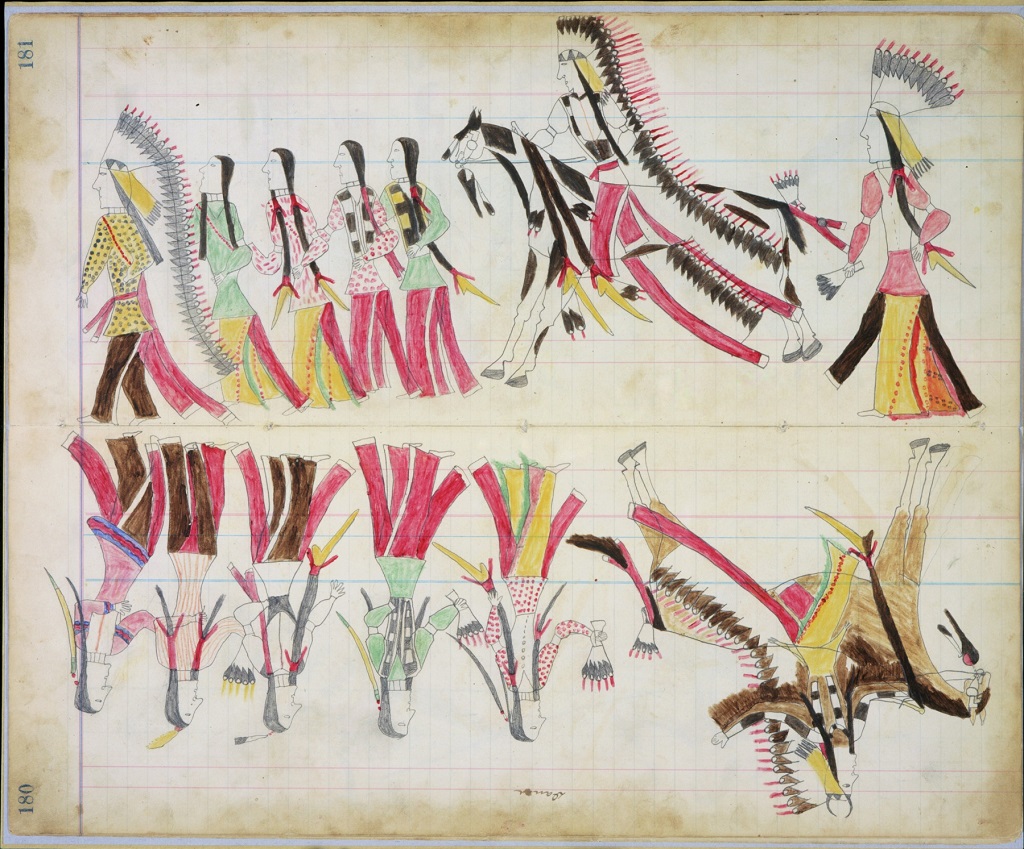Author:
The Art Institute of Chicago Staff
At First Glance
What materials can you identify in this sculpture? How do you think the artist manipulated these materials (or not)? What adjectives would you use to describe the artwork? What tools might have been used to create it? Does this sculpture remind you of anything that you have seen before? What do you think the artist wanted us to think about when we experience this artwork? Why? What connections can you make between the artwork and objects you have seen in the world?
Read to Build Knowledge
A small, smooth wooden cube rests on top of two rough, 10-foot tall tree branches. The lower ends of the branches cross over each other before they meet and seem to grasp the axle of a wheel. At first glance, it is unclear how this precarious wooden sculpture remains upright and does not roll away from the wall. This emphasis on structural contradictions reveals the artist’s lifelong exploration of form and materials.
Martin Puryear’s artistic interests are informed by his personal history. His career reflects an array of influences, including woodworking and craft traditions observed and learned while traveling to places as varied as Sierra Leone, Scandinavia, and Japan, among others. These experiences provide a context for Puryear’s decision to work with the shapes, textures, and associations of natural materials such as wood and animal hide. His attention to the relationships, and often tensions, between shaped forms and found elements in his sculptures may also be connected to personal experiences. In 1977, a fire in the artist’s studio and adjoining apartment destroyed much of his artwork. Puryear described this as an emotionally difficult time, and one year later he began a series of sculptures that visually expressed the contrast between the vulnerability and security of shelter. This sculpture, entitled Sanctuary, was created 1982 and evokes similar ideas and oppositions.
The construction of Sanctuary reflects the tension between stability and mobility, since the box at the top remains firmly affixed to the wall while the wheel seems to be free to rotate on the floor. Additionally, the sculpture suggests an opposition between natural components and manipulated geometric forms. The branches in the middle are asymmetrical and appear to maintain their original shape and surface texture, while the fabricated box at the top and the wheel on the bottom have been shaped by human hands and artist’s tools.
Analyze and Interpret
- What does the word “sanctuary” mean to you? How would you represent “sanctuary” in a work of art? How does Martin Puryear share his interpretation of the term through his artwork?
- Following his college graduation, Martin Puryear traveled extensively in the United States and around the world, which deepened his understanding of how to work with natural materials and informed his art making. What travels—even around your community—have influenced you?
For further reading (teachers)
African American Art at The Art Institute of Chicago, Teacher Manual (Chicago: The Art Institute of Chicago, 1997).
Benezra, Neal. Martin Puryear. Chicago: Art Institute of Chicago, 1991.

